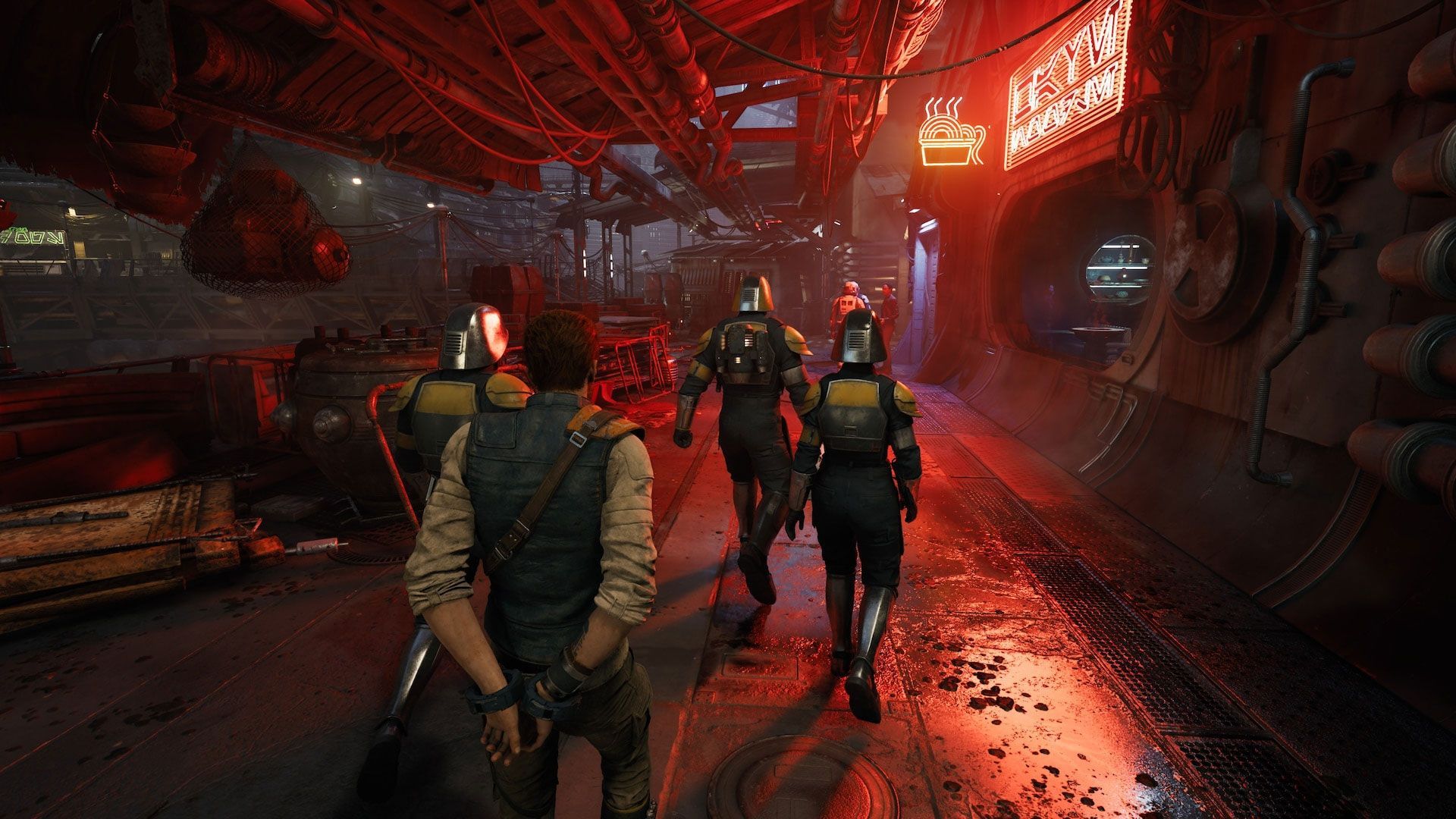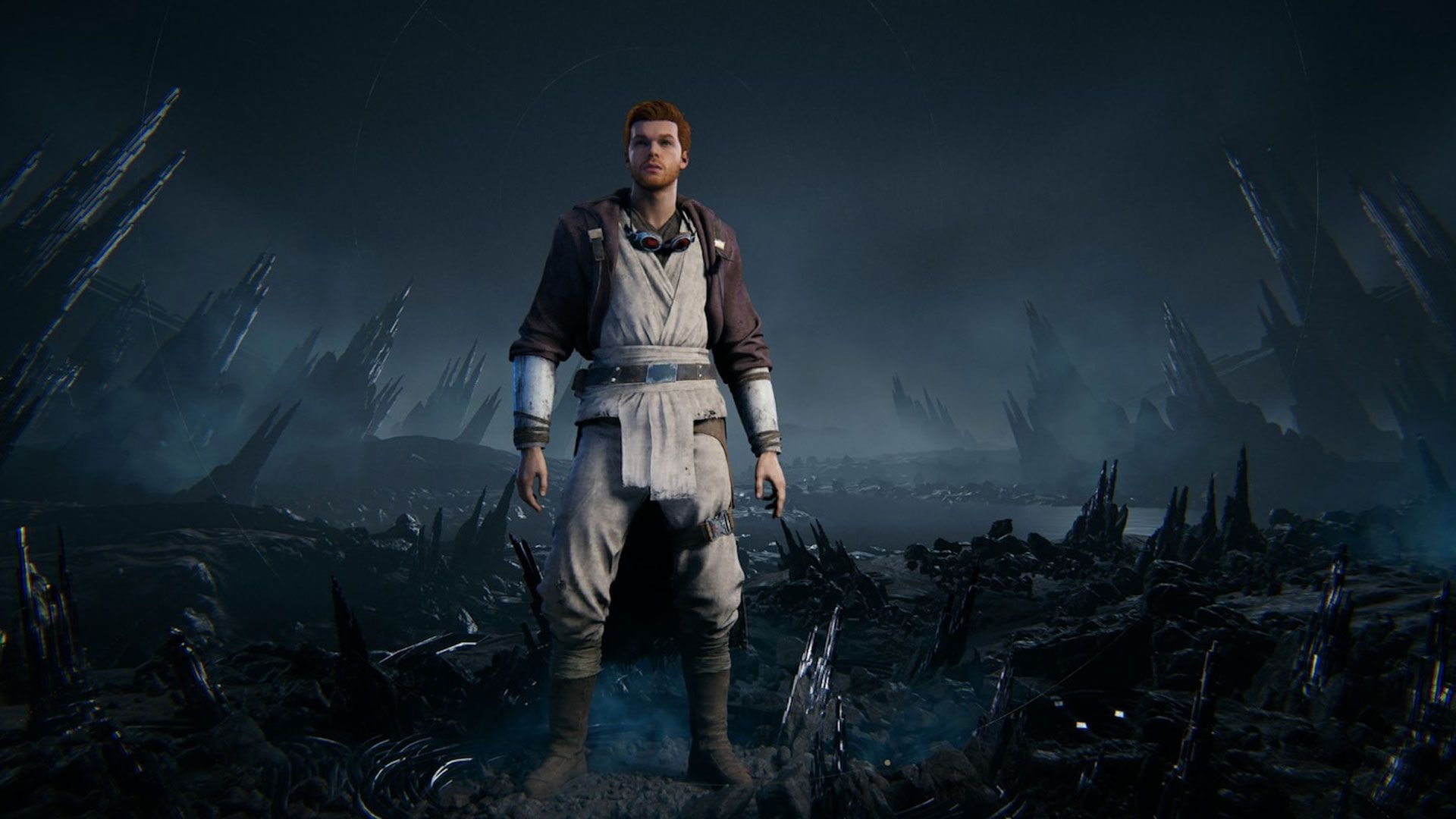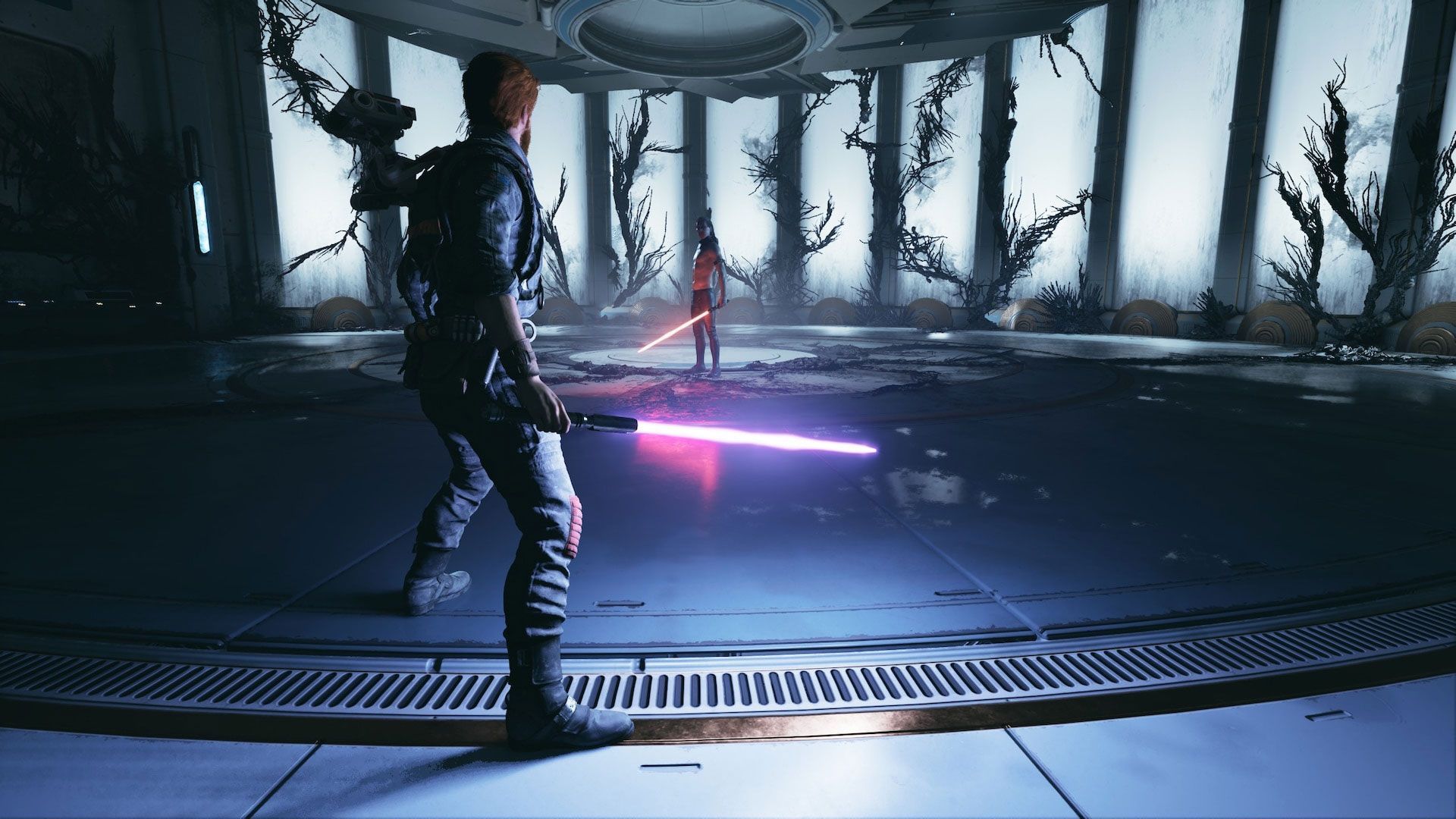Star Wars Jedi: Survivor Review
PlayStation 5
Star Wars Jedi: Survivor continues to deliver on the promise of a solid Star Wars action role-playing game.
Reviewed by Rayan on May 02, 2023
The franchise Star Wars doesn't need an introduction. From movies to games, it has spread its force to fans of every age and gender. From the first Star Wars game released on Arcade in 1983 to this latest installment Jedi: Survivor, numerous companies have developed and published countless Star Wars games. While Star Wars: Battlefront II by Pandemic Studios showed its promise, their next release Star Wars Battlefront didn't uphold that status, followed by DICE's failure of Star Wars Battlefront II.

This was when EA turned to Respawn Entertainment and published Star Wars Jedi: Fallen Order, which restored its former glory. And when Star Wars Jedi: Survivor was announced in May 2022 under the banner of EA and Respawn, it wasn't too difficult to imagine that we were in for another good Star Wars game. And thankfully, we weren't wrong.
After the finale of Jedi Fallen Order in 2019, Star Wars Jedi: Survivor picks up five years later. It wasn't hard to like Cal Kestis, who had to flee from the Galactic Empire after the collapse of the Republic. So Respawn would inevitably create a sequel after the enthusiastic reception of their first game. Despite some flaws, The Fallen Order stands out as one of the best Star Wars games we've played recently, especially for its action-oriented gameplay.
Respawn has addressed the prequel's most significant problems, and Jedi: Survivor is a highly likable sequel that has only scratched the surface of its innovative potential. This sequel isn't trying to shake up the entire genre; instead, it's fixing the problems with the first part and expanding on them to make something much better.

Star Wars Jedi: Survivor's events unfold five years after those of Fallen Order, where Cal Kestis's saga continues, and he finds himself in a dire situation, with the Empire's reach now encompassing the entire galaxy. The young Jedi had spent the last few years intercepting the Empire's schemes and recruiting anybody willing to stand up to the oppressive Emperor. There are new faces and surprising story twists as Cal and BD-1 embark on a new journey from a familiar setting.
Along Cal's new path, he runs into some familiar faces, Greez, Merrin, and Cere from his last adventure. While going through all this, he also tries to solve a mystery from the days of the High Republic. And when he and his friends face new challenges head-on, it puts them to the test in unexpected ways.
Although Jedi: Survivor lays the foundation for what could be an unrelenting tale of Cal and his friends taking on the full might of the Empire, the story takes on a more open approach. Without ever descending into complete incoherence, the game swiftly and relentlessly handles all of its plot twists and implausible characters. There will still be a lot of mystery surrounding this.

Star Wars Jedi: Survivor is presented as a direct successor to Jedi Fallen Order, despite the game's apparent plot and narrative changes, and as such, it preserves most of the distinctive attributes of the original. The game's core mechanics remain the same, including third-person action-adventure in the vein of Metroidvania-style gameplay, with an array of minor tweaks and improvements to the concept.
The game's primary mechanics are mostly unchanged from Fallen Order. Cal and BD-1 are still out there, scoping out new planets for us to visit. We explore dungeons via combat, climbing, and finding solutions to get new weapons, armor, and droid parts. It's worthwhile to revisit old locations in light of our improved ability to explore the area.
While the game's narrative might seem somewhat limiting, the gameplay is incomparably greater. The explorable worlds are vast compared to what was shown in the pilot episode, and they feature an extensive number of hidden areas, alternate routes, and quests.
However, this new, expansive environment has caused other waves in Star Wars Jedi: Survivor. You can return to any of the dozens of restricted areas on the map once you've obtained the necessary items. It's easy to lose track of locations from the very beginning of Koboh due to the sheer expanse of the map and the vast open areas you'll need to traverse.

Many of these locations are not only hidden away in an obscure part of the map but are also inaccessible until a very late stage of the game, making an effort to find them almost pointless. It's nearly not worth the trouble if all you uncover is some lore or a slight upgrade.
As the plot unfolds, we access a new planet in the game's universe for six. You can easily revisit each location by fast traveling. Furthermore, the entire world is at your disposal for further exploration after the story ends. Koboh and Jedha stand out as the focal planets, but the others are less emphasized. Koboh is the setting for the vast majority of the story missions.
The Jedha stone desert in Star Wars Jedi: Survivor, on the other hand, is just as vast, providing ample room to explore the submerged ruins. Koboh serves as the story's hub, with a saloon full of interesting NPCs to talk to, shops where you can trade in items found on your travels for more powerful versions of them, and everything else you could possibly need between missions.
The core mechanics of battle are mostly unchanged. Aside from their life gauge, enemies also display a posture indicator, which can be weakened by landing strikes or parrying. When it breaks, enemies are staggered, allowing you to launch a powerful strike.

However, the depth of the fights has been increased by the introduction of three new stances: the dual swords, the Blaster, and the cross saber, along with the single and double lightsaber. While the two are very similar, new skills, such as whipping or controlling enemies, are learned along the way.
As the story unfolds, you'll get access to new abilities, and a tree of available upgrades will appear as you earn experience points from killing enemies and scanning objects with BD-1. However, the ability to employ a blaster alongside Cal's lightsaber and a fighting stance prioritizing powerful hits is unlocked relatively early in the game. However, there are only two basic stances that you can typically equip, which can be frustrating when you can't predict the types of enemies you'll face.
Two additional Stance variations are available after completing Star Wars Jedi: Survivor's main story. The Blaster is the first, while the Crossguard is the second. As his name implies, Blaster wields both a lightsaber and a Blaster weapon. In comparison to Single, its combos are significantly quicker. In addition, the weapon combinations provide a lot of fun. Contrarily, Crossguard features gameplay that is reminiscent of heavy blades.

Combat is fun, and it all comes down to the skills of the Jedi and their lightsabers. The game's mechanics rely on switching between several fighting styles, just like in the original, and you might recall from that entry that you could also fight with a double sword. There are several new challenges in this installment, and they provide a great deal of variety to the gameplay and force you to develop your strategies for overcoming them.
But there is a major issue with enemies that really feels disconnected. This disconnection is partially due to the fact that the enemies are not designed to respond to Cal's strength. From the rowdy Bedlam Raiders to the Empire's huge collection of droids, many enemies can shrug off lightsaber slices as if they were hits from a hollow stick. The flagrant lack of respect for such a renowned powerful weapon is insane from a storytelling standpoint, but it's more insulting for the gameplay because it unfairly disadvantages Cal.
Cal fumbles when hit, but his foes don't, and this difference disrupts the flow. However, Cal moves differently on the platform sections. By the game's later stages, he can pull off various impressive combos—including double jumps with aerial strikes, runs on walls, and a few other tricks.

Boss battles are particularly well-developed, despite not all that many of them, which may come as a letdown given how much more was anticipated. Mini-bosses make an effort to fill the void, though, and they make us eager to get to a chapter's climactic showdown.
Combat in Star Wars Jedi: Survivor remains the primary means of gaining experience and leveling up; however, completing objectives is the best way to level up and acquire new abilities. In addition to foreshadowing the puzzles' eventual layout, the game's Jedi Chambers feature environmental puzzles, allowing you to solve and earn rewards.
While participation is optional, there is much to gain from the process. The skill system is broken up into three different categories: Survival, which handles aspects such as health and defense; Lightsaber, which is where we concentrate on the combat aspect; and Force, which is where you build the power aspects.

The Force part is split down into Jedi Concentration and Telekinesis. With the addition of separate skill trees for each stance and each of the Force powers, you can adopt a deeper approach to the game that focuses entirely on you. Apart from the character's skill tree, the game's combat mechanism is significantly expanded while retaining its influence on the genre.
You can switch between five distinct Lightsaber usage styles, each with its own skill tree, increasing the game's replay value by adding variety and depth to the combat experience. And if you accidentally invest in the wrong skill, do not fret. These abilities are always open to reset.
All the characters, objects, and landscapes are impressively crafted, making Star Wars Jedi: Survivor a visual treat for the genre fans. The game's visual settings can be toggled between Performance and Quality modes. The performance side emphasizes frame rate, while the quality side prioritizes line clarity and detail.

However, switching to performance mode makes the game look starker and less vibrant right away, stripping it of some attributes that could have elevated the game to the level of other modern games in terms of quality.
Instead, the game's music is handled by an original score that captures the spirit of the Star Wars universe flawlessly by blending familiar themes from across the saga with fresh compositions. All of the audio impressions make you get thoroughly immersed in the universe. Cameron Monaghan as Cal Kestis, Tina Ivlev as Nightsister Merrin, and Debra Wilson as Cere Junda, along with most of the actors and actresses, did a great job behind their characters.
Star Wars Jedi: Survivor is a worthy sequel. It improves upon its predecessor, setting a higher bar for itself in terms of scope, detail, and polish. The Stance system elevates the game over its predecessor, making combat more fun and easier to follow. The narrative does raise a few intriguing topics, but a confusing and unnecessary ending lessens its quality. Admittedly, the game is a little bit difficult, particularly regarding replayability when viewing from an RPG fan's perspective.
The inclusion of more content that encourages a sense of exploration would've been a plus in that context. In contrast, fans of the Star Wars series won't surely be bothered with these matters and will be rewarded with a fantastic journey full of events, exploration, and interesting characters. Star Wars Jedi: Survivor may have pared down to some fundamentals, yet it continues to deliver on the promise of a solid Star Wars action role-playing game.
Senior Editor, NoobFeed
Verdict
tar Wars Jedi: Survivor may have pared down to some fundamentals, yet it continues to deliver on the promise of a solid Star Wars action role-playing game.
80
Related News
No Data.

